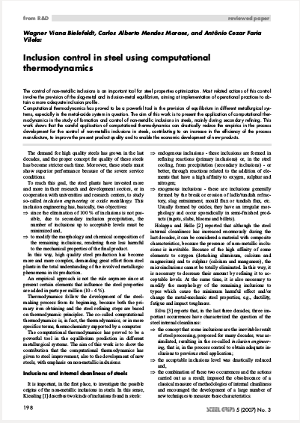The control of non-metallic inclusions is an important tool for steel properties optimization. Most related actions of this control involve the prevision of the slag-metal and inclusion-metal equilibrium, aiming at implementation of operational practices to obtain a more adequate inclusion profile.
Computational thermodynamics has proved to be a powerful tool in the prevision of equilibrium in different metallurgical systems, especially in the metal-oxide system in question. The aim of this work is to present the application of computational thermodynamics in the study of formation and control of non-metallic inclusions in steels, mainly during secondary refining. This work shows that the careful application of computational thermodynamics can drastically reduce the empirics in the process development for the control of non-metallic inclusions in steels, contributing to an increase in the efficiency of the process manufacture, to improve the present product quality and to enable the economic development of new products.
Inclusion control in steel using computational thermodynamics

